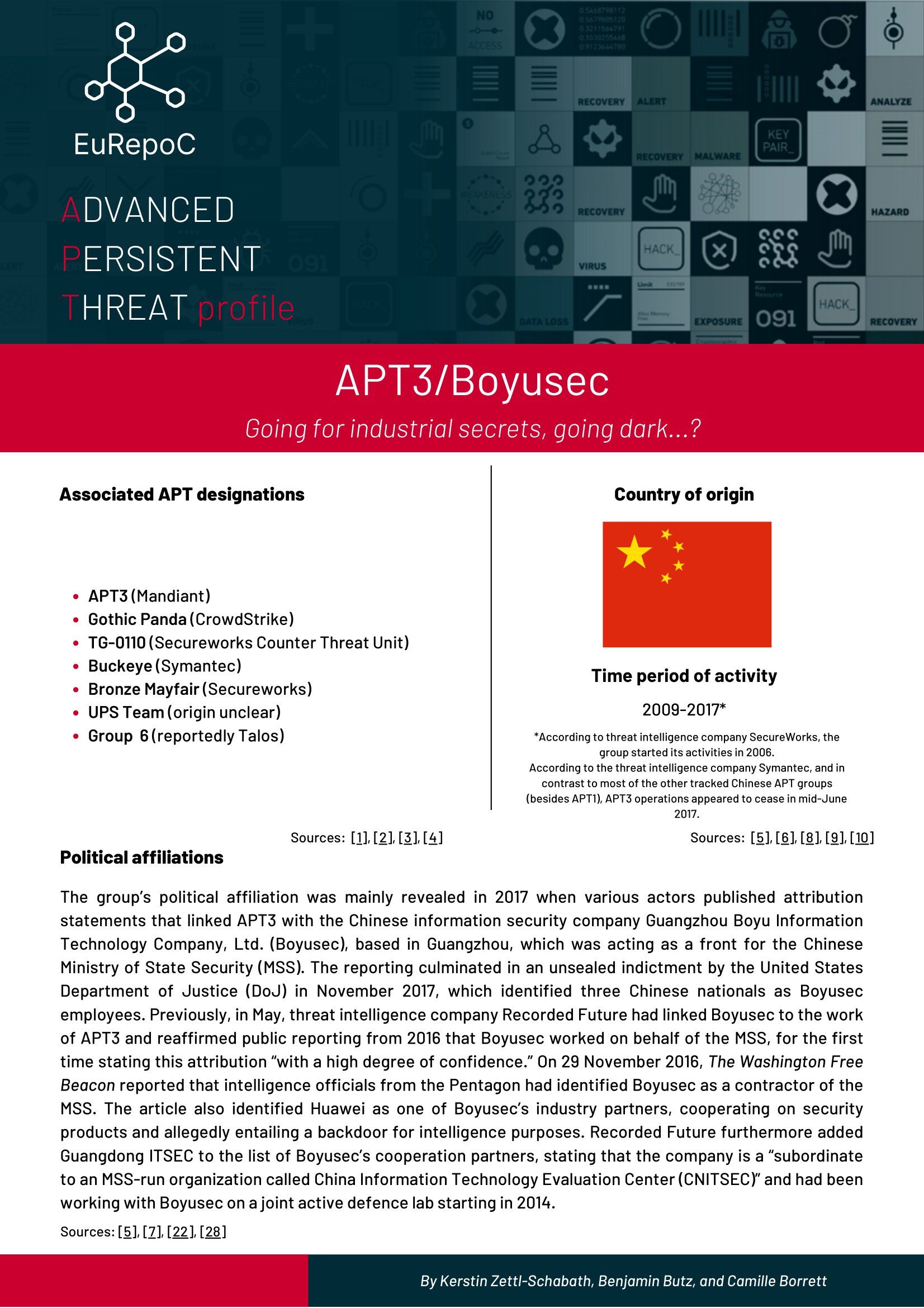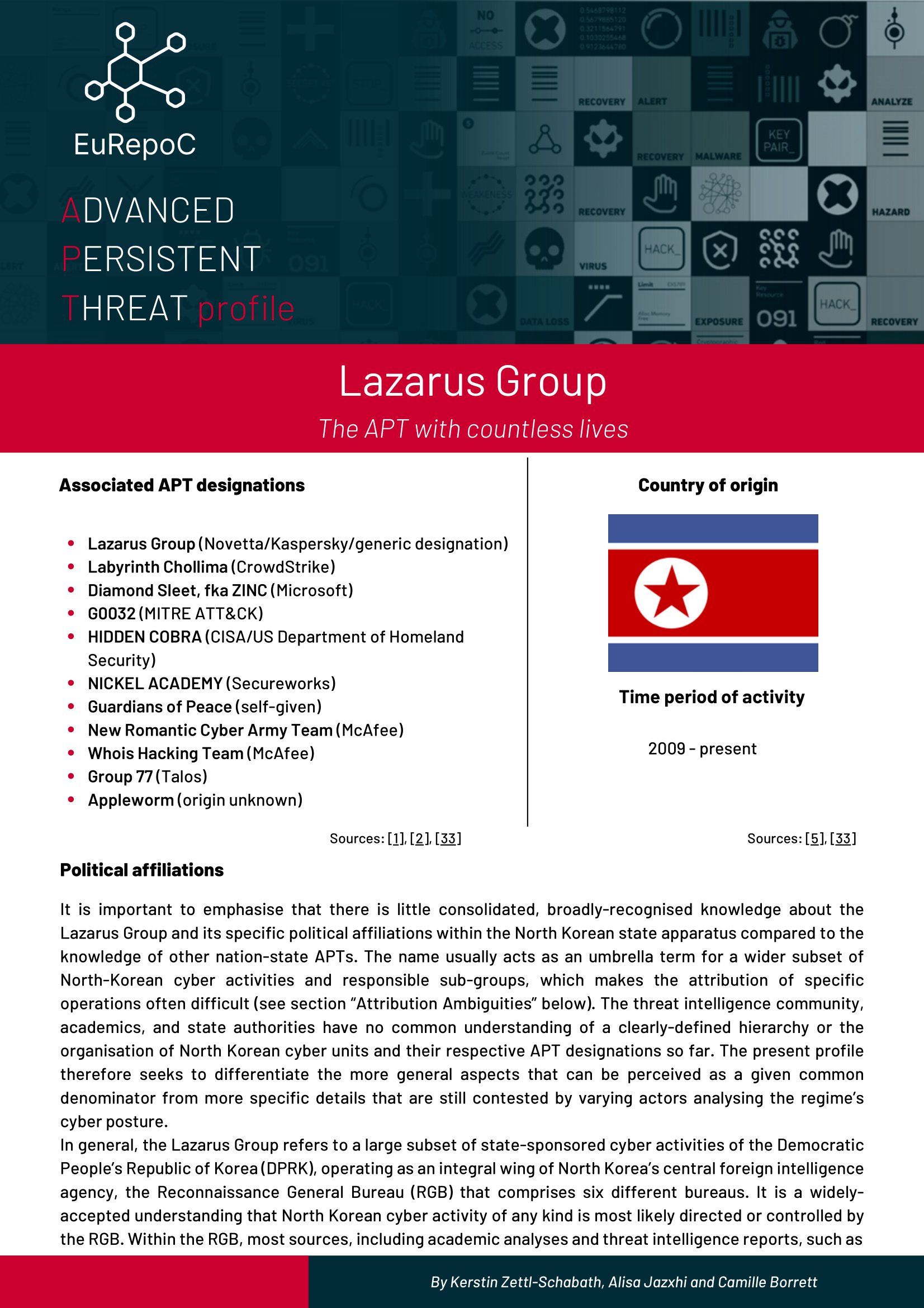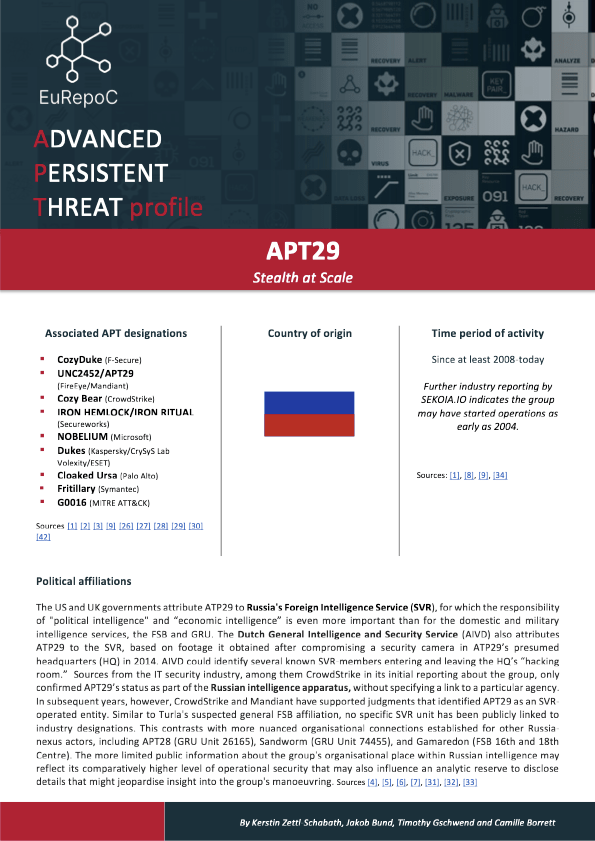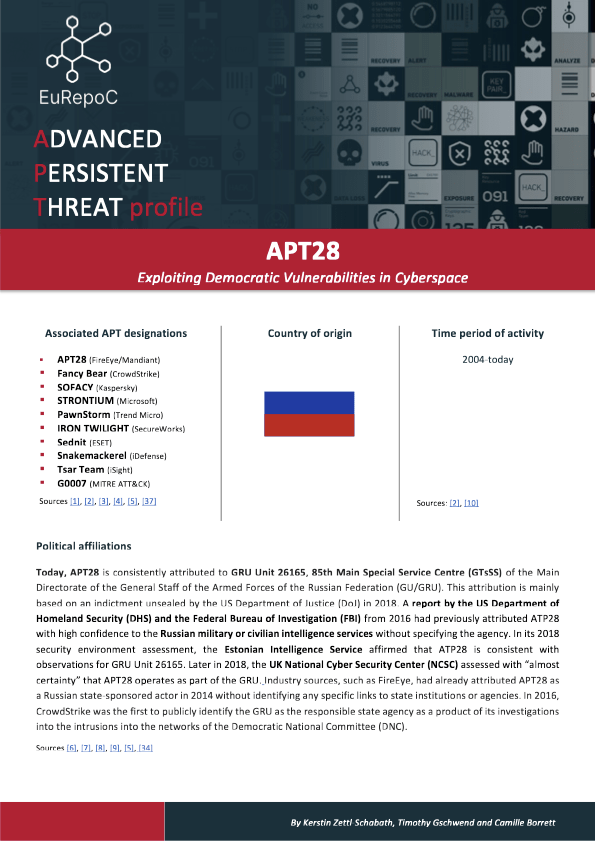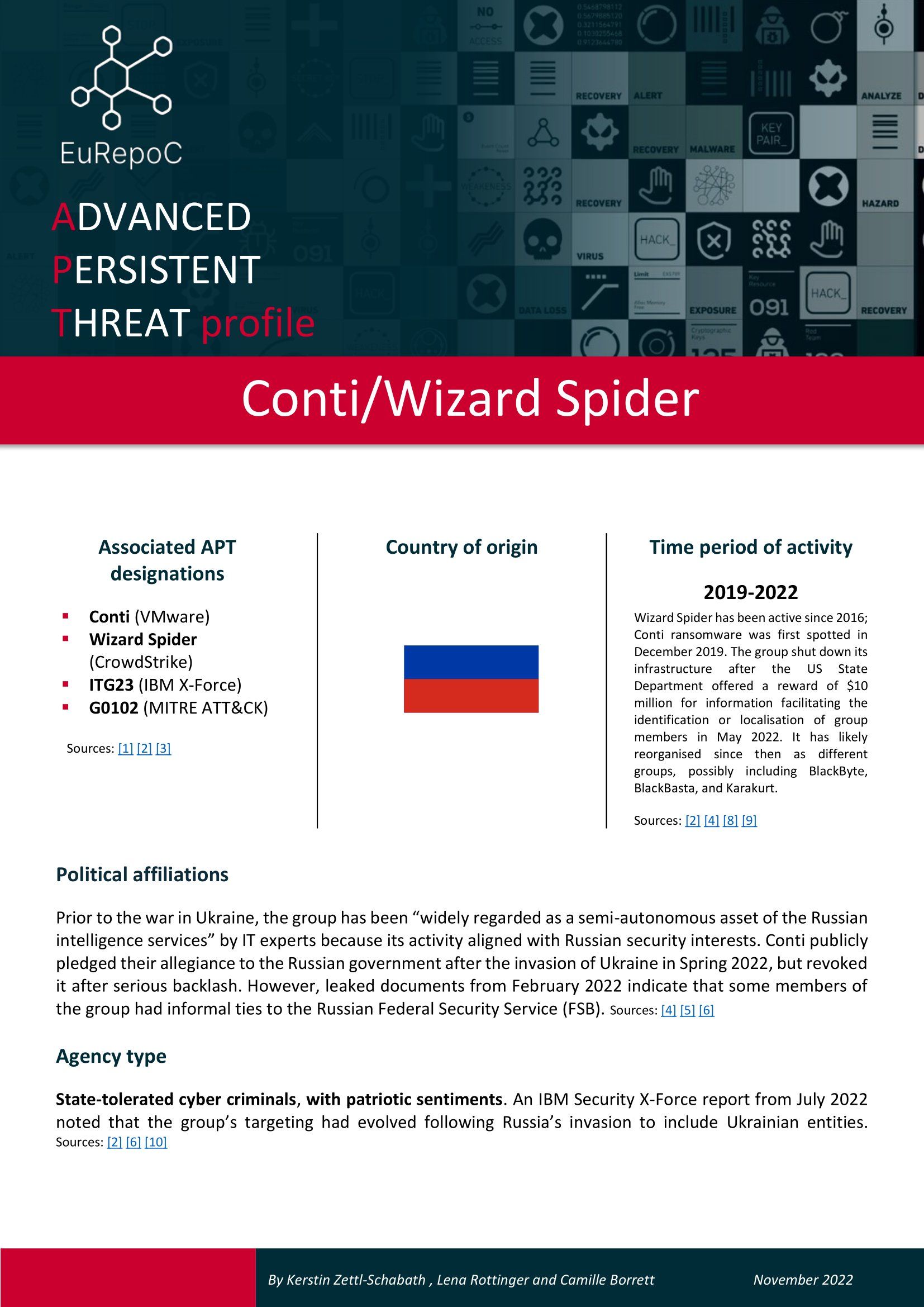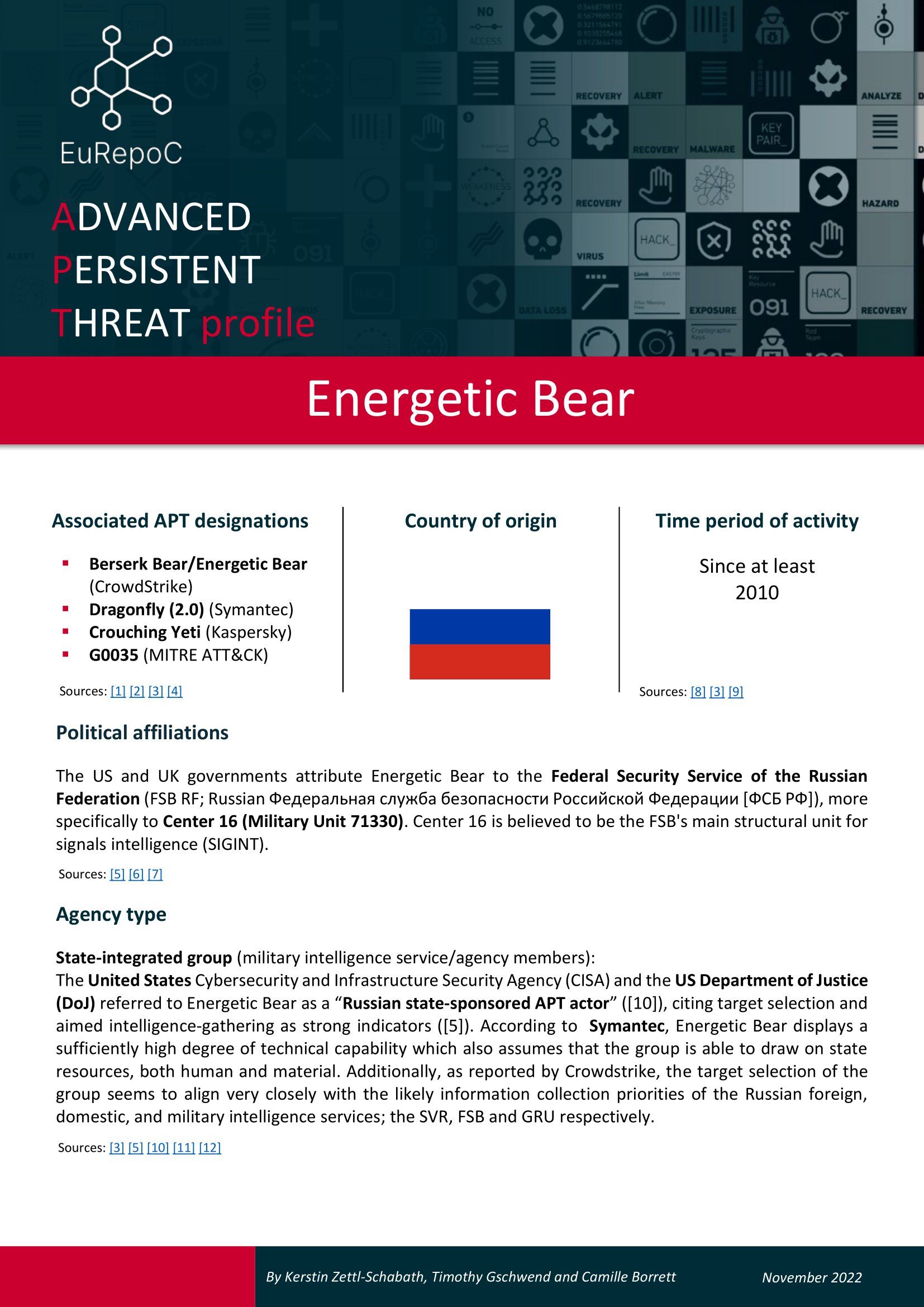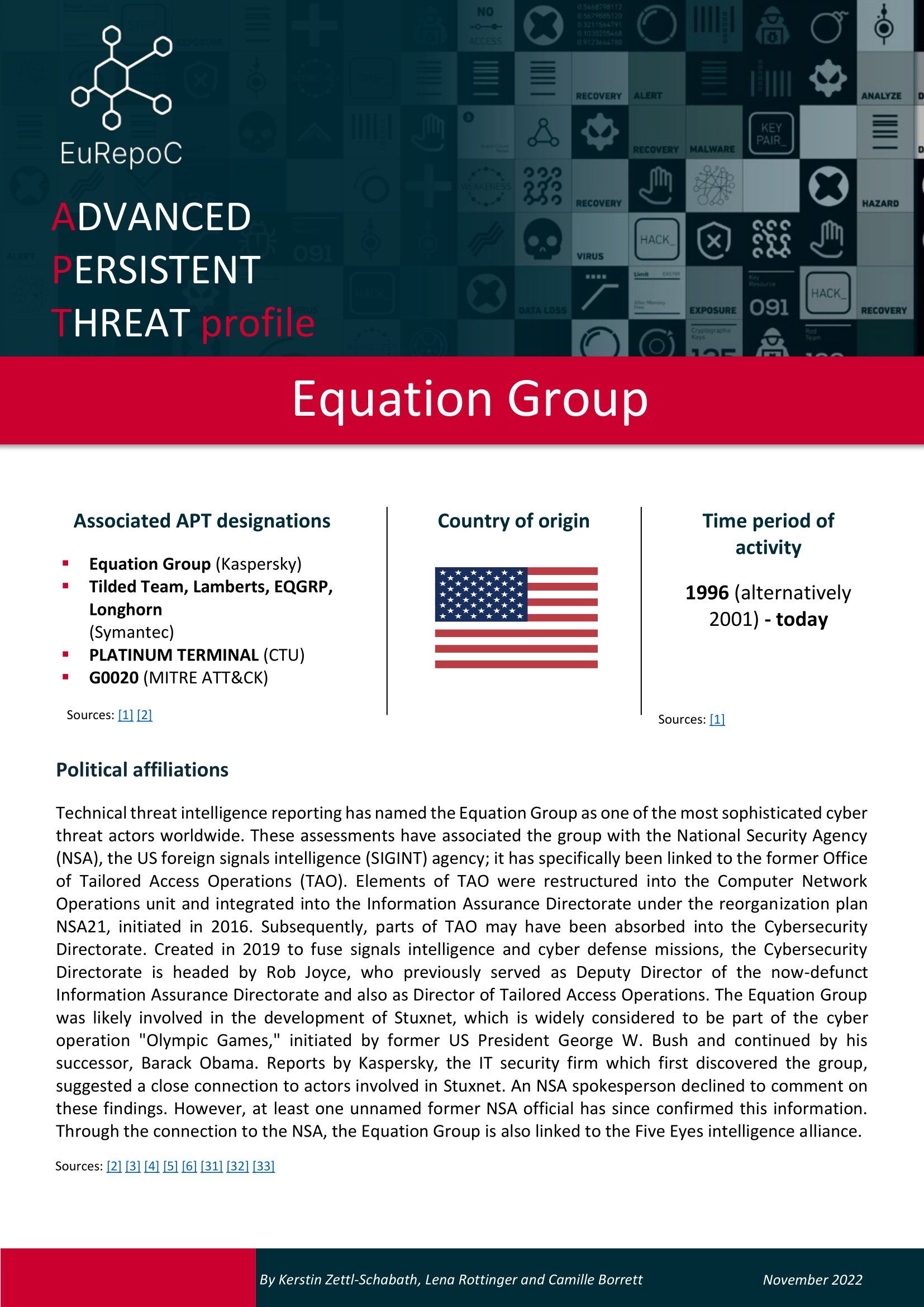Advanced Persistent Threats (APTs)
APT Profiles
The past decade has seen the emergence of so-called ‘Advanced Persistent Threats‘ (APTs). These are particularly potent, persistent, and state-affiliated, if not state-integrated, cyber actors.
We present the most prominent APTs in the form of short, standardised and regularly updated profiles, which cover the following aspects:
- key aspects of the group’s conflict activity (quantitative & qualitative)
- its description within the framework of political, technical, and legal attribution processes
- and countermeasures already initiated (e.g., indictments, confiscations, sanctions, etc.).
To address the often-unambiguous description of the groupings, we identify controversies of the attributions made by different actors. This aims to facilitate the debate on contested responsibility attribution that also occur on an actor-level.
We have also developed a Threat Level Index for assessing the overall intensity, frequency, and scope of the attacks on specific APT groups. This index is derived from our data. You can find more details on our methodology in the PDF downloadable below.
China
Iran
Profiles coming soon...
North Korea
Russia
Hardly any country has caused as much attention in cyberspace in recent years as the Russian Federation. Whether classic cyber espionage against rival states, domestic opposition members, or foreign media institutions; electoral influence by hack-and-leak operations; or sabotage by disruptive cyber attacks on critical infrastructures, Russian APTs have so far displayed a wide range of forms of operation in the digital space, not least in the current war against Ukraine. Due to the growing interrelationship between political and criminal cyber activities, Russia not only deals with classic APTs, but also cybercrime groups, which are known to have close ties to government agencies.

